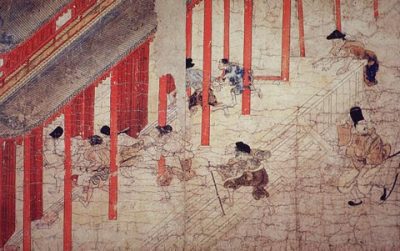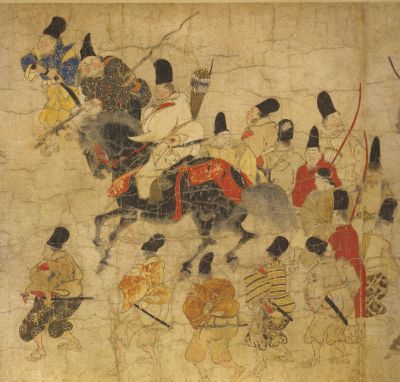Art of 12th century Japan: Mitsunaga and a glimpse into the ending of the Heian Period
Lee Jay Walker
Modern Tokyo Times

Tokiwa Mitsunaga will always be remembered for his artistic work concerning the Annual Rites and Ceremonies (1173) in twelfth-century Japan. Equally significant, it provides a glimpse into the ending of the Heian Period because a new order was waiting.
The Nara Period developed high culture in Japan. Hence, the Heian Period (794-1185), which adopted greater Japanese tendencies, benefited greatly from the developments of the Nara Period. However, during the lifetime of Mitsunaga, the power concentration of Heian and the Taira clan would be defeated by the Minamoto clan under Minamoto no Yoritomo (1185).

This culminated in the Kamakura Period 1185 to 1333. Yet, officially, this era began in 1192 when Yoritomo became the shogun. The ultimate demise of the Taira is summed up by the tragic death of the boy Emperor Antoku (1178-1185). He died by drowning after his grandmother threw him into the deepwater of the Shimonoseki Straits – after knowing that the Battle of Dan-no-ura was lost and fearing what his captures would do.
Mitsunaga, who completed the Annual Rites and Ceremonies in 1173, understood the delicate situation in Japan. After all, the Hōgen Rebellion (1156) and Heiji Rebellion (1159) not only furthered the intrigues of the Taira and Minamoto clans but ultimately led to the rise of the samurai.

This, in turn, led to the demise of the Heian Period and the long influence of the bakufu tent government. Hence, once Yoritomo emerged victoriously, the feudal age in Japan centered on the samurai warrior caste was set in stone for centuries to come. Of course, new power dynamics would enter the fray. However, until 1868 and the Meiji Restoration, the events of the late twelfth century shaped Japan greatly.
Mitsunaga knew that his connection with courtiers and the power concentration dynamics that he witnessed were fraught with danger because of the growing power of the Minamoto clan. His death during the same timeframe of the ending of the Heian Period must have brought him great sorrow. Therefore, his classic art is a brief glimpse into the dying days of the Heian Period that was his way of life.

Thankfully, despite the tragic fire that destroyed the 60 original horizontal handscrolls of the Annual Rites and Ceremonies in 1626, a court painter in the Edo Period copied 20 of the original scrolls and restored the national treasure created by Mitsunaga.

PLEASE DONATE TO HELP MODERN TOKYO TIMES
Modern Tokyo News is part of the Modern Tokyo Times group
DONATIONS to SUPPORT MODERN TOKYO TIMES – please pay PayPal and DONATE to sawakoart@gmail.com
http://moderntokyotimes.com Modern Tokyo Times – International News and Japan News
https://www.pinterest.co.uk/moderntokyotimes/ Modern Tokyo Times is now on PINTEREST
http://sawakoart.com – Sawako Utsumi personal website and Modern Tokyo Times artist
https://moderntokyonews.com Modern Tokyo News – Tokyo News and International News
PLEASE JOIN ON TWITTER
https://twitter.com/MTT_News Modern Tokyo Times
PLEASE JOIN ON FACEBOOK